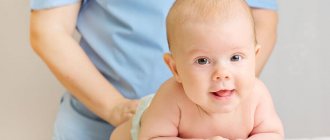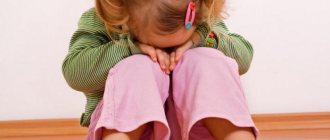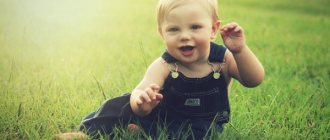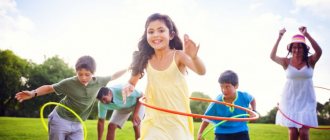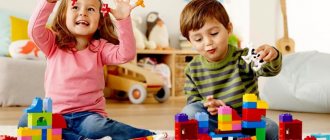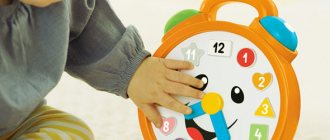The limbs of a child who has just been born are often stiff. At the age of one, the child becomes mobile, but before this moment the baby’s motor system is poorly developed, so most actions are inaccessible to him.
Therapeutic physical education for young children is aimed at developing and improving the motor functions of the limbs. The procedure is used for health purposes, as a lesson in physical education: thus, the baby gets used to new conditions outside the mother’s body. Exercise therapy is also used for children born with pathologies of the legs or arms.
About the benefits of gymnastics for newborns
Anyone, even a newborn child, develops in movement. Physical activity helps normalize blood circulation and regulate metabolic processes.
Gymnastics is of particular importance for babies whose parents have chosen tight swaddling. For such children, exercise will help stretch their still weak limbs and get rid of muscle spasms.
If your baby’s arms and legs are “free,” he also needs a general strengthening warm-up to develop tone and coordination.
Plus, this is a great way to build a close bond with your little one. Gentle touches and a mother's gentle voice will help you get closer and convey to the baby that he is safe and his parents love him very much.
Main contraindications
Exercise therapy does not always have a positive effect on the child’s body. Doing gymnastics is strictly prohibited in the following cases:
- An infection was previously diagnosed, which caused a significant increase in body temperature.
- Pathologies in the functioning of the heart and lungs.
- There are rashes, fungi or burns on the skin.
- Disturbances in the gastrointestinal tract.
- Diseases of the circulatory system.
- Malignant or benign formations.
- Poor urine analysis.
- Inflammation, which manifests itself in the form of purulent formations.
Gymnastics should also be avoided in the period immediately after vaccination. For three days, swimming may also be completely prohibited. It is best to avoid exercise therapy for at least seven days.
The effect of gymnastics will be noticeable almost immediately. The baby will sleep more soundly. However, additional physical activity can be introduced only after agreement with the attending physician. During training, adjustments are also required if the baby begins to get very tired. It will also take a certain period of time to get used to the loads. As a rule, the baby begins to enjoy exercise after two weeks of regular training.
When to start doing gymnastics with a newborn
Experts have different opinions on this matter. Some believe that the second week of a baby’s life is quite the right time, because every day his ligaments will get stronger, which means it will be harder to stretch. Others suggest waiting until the baby goes through the adjustment process, which is usually completed by three weeks.
Therefore, exercise for a one-week-old baby usually consists of lightly stroking its limbs (from the periphery to the center), abdomen (circular movements) and back. This will help disperse interstitial fluid and lymph throughout the baby’s body.
In addition to a light massage, you can bend and straighten the baby’s arms and legs:
- We spread the baby’s arms to the sides and cross them in the chest area;
- we raise the arms one by one, the free hand is along the body;
- bend the legs and press them to the tummy;
- We open our legs bent at the knees like a book.
Features of conducting classes on fitball
The projectile has been used for several years to effectively strengthen the baby’s musculoskeletal system. Parents will be able to independently perform a set of exercises with it at home:
The simplest among them is considered to be swaying. Manipulation can be done in any direction. It is only important that the baby is always on his back.
We alternately move the ball towards and away from ourselves. At the same time, the baby's knees are bent and pressed against his tummy.
The first exercise can be performed not only on the back. The baby is turned over on his tummy and similar manipulations continue.
Exercises on the ball should begin only after it is covered with a clean diaper. Parents should ensure that the child does not hit his head. At the first stage, only light training is allowed. They become more complicated as the baby gets used to the loads.
Exercise therapy is useful for children at any age
Important rules for gymnastic exercises
Already from 3-4 weeks you can do more active exercises. However, first you should familiarize yourself with some of the rules for its implementation.
The right time
To prevent your baby from regurgitating his lunch, do not exercise earlier than an hour after his meal. Or move with the baby 30 minutes before eating, then the tired baby will eat and quickly fall asleep.
Try to conduct classes daily, preferably at the same time of day. The period suitable for this is from morning to lunch, when children are more active.
The right mood
If your baby is sick or just naughty, stop exercising. It is necessary that the baby associates gymnastics only with positive emotions!
Preparing the room
It is best to combine exercises with air baths, which are an excellent way of hardening. Therefore, the practice room should be clean and ventilated, with an air temperature comfortable for the baby (20–22 degrees).
Thematic material:
- Hardening of preschool children
- Exercises with babies on a fitball
Prepare a hard surface (diaper, table), cover it with a blanket or diaper.
We start and end with a massage
A good massage will help you not only prepare for exercise, but also relax after it. You need to be especially careful with newborns, so it is better to entrust the first massage sessions to a professional. He will determine the condition of the baby’s muscles and tell the mother how to massage herself.
Any massage, especially for children, should be performed with oil or cream that suits your child.
Massage for children does not apply to such important organs as the heart, liver and spine.
Duration of classes
At first, gymnastics is done for no more than 5 minutes, including massage. When the baby gets a little stronger and grows up, he will be able to train for up to 15–20 minutes.
Do no harm
Do not try to perform a large number of exercises in a short period of time. They, like massage, for infants are done at a measured pace, without sudden movements.
Eliminate contraindications
Do not miss scheduled examinations by specialists in order to notice and correct pathologies in time. Any gymnastics for babies is carried out only after the recommendation of doctors, since some congenital and acquired ailments during childbirth (intracranial pressure, deviations in the development of the musculoskeletal system, etc.) may worsen.
Who provides exercise therapy for babies
Often the parents of the baby become massage therapists for physical therapy, but sometimes this is a special doctor.
Before starting classes, mom and dad consult a doctor for recommendations. A specialist will examine the child. If the following factors are found that make massage procedures contraindicated, the doctor will prohibit the exercises:
- Fluctuations in body temperature. If the baby’s temperature rises sharply, this means that an infection has entered the body, therefore, in order to avoid complications, the therapist will prohibit the use of physical activity.
- Inflammatory processes with the release of pus.
- Diseases in which frequent bleeding occurs.
- Stomach diseases, accompanied by a gag reflex, pain in the organ and nausea.
- Physical therapy is canceled if the child has an allergic reaction.
- The baby was born with heart failure.
- There is a benign or malignant tumor in the body.
Once the vaccine has been given, parents should stop going to school for 3 days. After time has passed, you can resume physical education if the baby’s condition has stabilized.
You can find out how to do exercise therapy for a newborn correctly in this video:
Gymnastics for little ones
From birth until about 2 months of life, the child’s body actively responds to innate reflexes. Therefore, the main part of the training is based on them. This kind of gymnastics is called reflex and consists of simple exercises.
- Laying on the tummy - the baby instinctively raises its head.
- Place your baby on his side and gently hold his legs. With the finger of your free hand, draw a path along his back, which will run 1 cm from the spine, from the sacrum to the neck. Following the reflex, the baby will bend.
- We place a finger in the baby’s hand to develop the grasping reflex; later you can do this with a rattle.
Charging for babies over 1 month of age is a little more complicated. The babies are already strong enough to practice crawling. To do this, place a support under the feet of the child lying on his stomach, from which he will push off and move forward a little.
A vertical position is useful for training the neck muscles of children. If a mother takes her baby in her arms 2-4 times a day, he will begin to hold his head up faster.
Even the youngest children love to walk. In one-month-old infants, this is still a reflex walking. It appears when a child, who is in an upright position, feels support under his feet.
Why do newborns need exercise therapy?
Most modern parents know what exercise therapy massage for newborns is. A small child grows every month: weight increases, the body lengthens, and new skills appear. During the period of adaptation to the environment, the main thing is to follow the following rules for caring for the baby:
- give breast milk correctly;
- swing on the handles;
- maintain a sleep schedule;
- carry out water procedures strictly in a changing sheet.
Therapeutic exercise is useful for children who are completely healthy, in order to avoid the late development of pathology. From the moment the baby is born, new parents engage in physical therapy procedures with him. Physiotherapy has a significant impact on the development of a young child:
- With regular exercise, the baby's blood circulation is activated, which helps get rid of blood stagnation in some tissues and muscles.
- The baby sleeps peacefully at night and eats well.
- The musculoskeletal system is formed without defective disorders;
- The functioning of the stomach, intestines and liver is normalized.
- The child develops physical skills.
- The protective function of the immune system increases.
- Muscles and bones adhere tightly.
- Mental development occurs as both hemispheres of the brain are stimulated.
- The metabolic process returns to normal.
During a massage, little children rarely cry or become capricious, since when alone they often play with their legs and arms. If parents use the procedure, it accelerates the development of motor functions: the child learns to sit and crawl faster, and can learn to walk before the age of one year.
Doctors often recommend exercise therapy procedures for newborns for hip dysplasia. This term refers to the defective development of one of the organs of a newborn baby. The condition can be corrected if you give your baby a massage 2 times a day.
Dynamic charging
Dynamic gymnastics for infants differs from the usual one in that during the exercises the baby is not placed on a hard surface, but in the mother’s arms or a gymnastic ball.
Such activities will help in the development of the vestibular apparatus, but will require some skill and special care in handling the fragile body of an infant.
It consists of swinging on a fitball, springing movements and rolling on a ball. At first, the child simply lies on it, by 4–5 months the baby “springs” while sitting, and then standing.
Why do you need gymnastics at 1 month of life?
Advertising
Disputes among experts have long divided opinions into two parts: some argue that massage and gymnastics should begin at 1.5 months, others argue that classes should begin immediately after birth. I will say one thing, exercise has never harmed anyone! Judge for yourself, we adults cannot stay in one position for a long time, but a little lump is not yet able to change positions on its own, what is it like for him? Of course, you can’t do heavy loads, but passive exercises will help your baby develop his psychomotor status.
Gymnastics helps the child in the functioning of many biochemical processes in the body, improves blood supply, lymph flow, immunity, and has a positive effect on the functioning of all organs and systems.
The great physiologist Sechenov wrote: “Movement is life!”
In the first months of a child’s life, gymnastics will not last long due to the short period of wakefulness, but with age this period increases.
The benefits of massage for newborn babies
Massaging the plantar surfaces is certainly useful, but you won’t wait until the baby gets to his feet and begins to massage his feet on his own. Moreover, general massage is no less powerful, and most importantly, a pleasant means of improving health.
The benefit of massage for newborns is that such procedures accelerate the maturation of T-lymphocytes and increase their phagocytic activity, improve the movement of blood through the arteries, stimulating the blood supply to organs, and promote the removal of waste substances from tissues through the veins and lymphatic vessels. Massage stimulates the development of the lymphatic system, which is responsible for the formation of immunity. During gymnastics and massage for newborns, muscles receive an additional flow of blood, oxygen and nutrients, and therefore develop better and are in good tone. This means that your baby will quickly master motor skills and will soon delight you with the ability to sit down or stand up independently. Massage stimulates the production of endorphins - pleasure hormones, and a joyful mood promotes growth and development. The touch of mother's affectionate hands tells the baby that he is loved and protected from all adversity, so he grows up calmer and more cheerful.
Before giving a massage to a newborn, set aside a time in your daily routine that is convenient for you and the baby for this procedure and try to stick to it, then after some time the baby will already feel the approach of the treasured hour and joyfully greet it.
The best time for a session is 1.5-2 hours after feeding. It is not worth giving a massage when the child is hungry or wants to sleep. This way you exhaust him and yourself, but a massage should bring pleasure and benefit.
Massage for newborns at home is another type of close contact between mother and child, during which the baby receives an additional portion of tenderness and affection. At this time, try not to be distracted by extraneous matters and conversations, but to fully concentrate on the event and the child’s feelings.
Communication during a massage allows you to establish a special closeness with your baby and once again demonstrate your love to him. Talk to him kindly and gently, name the parts of the body that you are currently massaging: “Where are our hands? Now we will massage them so that they become strong and strong. Now let’s rub the legs so that they are strong and run quickly. And let’s knock on the back, and don’t forget about the tummy.” Combine physical exercises with educational activities, during which the baby gets to know his own body and learns to coordinate position in space.
Gymnastics for newborns 4-6 months
We expand and complicate the exercises listed in the previous paragraph.
- Smoothing and massage of arms and legs (described above).
- Flexion and extension of the arms and legs (“bicycle”, described above).
- Back massage.
- Abdominal massage.
- The child lies on his back. We hold his legs with both hands, just above the ankle. And we take “sliding steps” with our feet on the surface. This further stimulates the baby's feet.
- The child lies on his back. We perform circular movements with our legs in the area of the hip joints. First, the legs are straightened, we hold them with our hands above the knee joint. Then we press the legs to the stomach, spread them apart and straighten them again.
- Hold the baby close to you, with its back to your chest and stomach. Fix his legs motionless, and first his stomach. The child will try to “hold his back.” After some time, you will be able to remove the fixation of the abdomen and fix only the legs, and the child will strain the back muscles and keep it straight.
- Flips by the legs. The child lies on his back, you take him with one hand, for example your right, by the legs, by both at once, above the ankle. And from this position we try to “push” the child by the legs to turn over to the left. At the same time, you can extend the child’s right arm along his body, this will make the revolution easier. Then do the same in the other direction.
- To practice crawling, we no longer place a “support” in the form of a palm under the legs. We just put the baby on his tummy, place a bright toy in front of him (at some distance), and he will gradually crawl towards it.
- Note. At the end of the exercise, be sure to let the child “catch up” with the toy and explore it.
- You need to put the child in your arms so that he is in a “suspended” position on his back. He will tense his neck muscles, trying to lift his head as far forward as possible.
The massage process will bring pleasure to the baby if you stock up on several useful “helpers” from Mom’s Store in advance:
- rattles that will attract the attention of the baby;
- developmental cortices, it will be much more interesting for the child to perform exercises on them;
- toys for sleep - they will help a child who is tired after a massage fall asleep sweetly.
Also pay attention to
comfortable slings, they help strengthen the child's back.
Fast and pleasant service awaits you.

